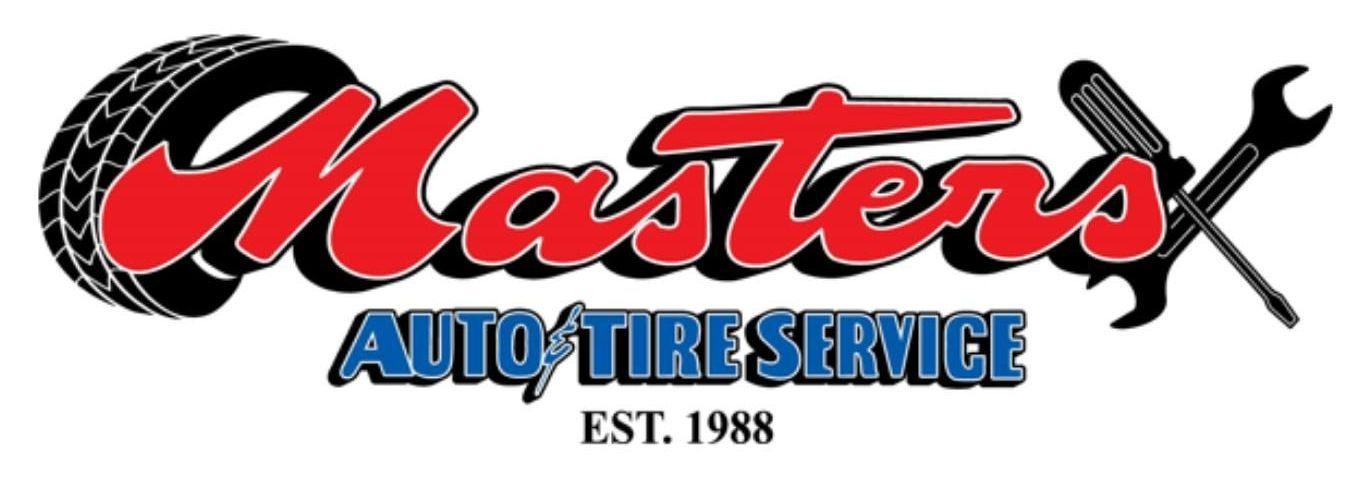Services
At Masters Auto & Tire Service in Seattle, WA, we’re passionate about keeping your vehicle in top shape. Whether it's a routine oil change, tire rotation, or more extensive repairs, our skilled technicians have got you covered. We believe in honest, reliable service that gets you back on the road safely and efficiently. With a friendly atmosphere and a commitment to quality, we treat every car like it’s our own. Come visit us and experience the Masters difference!
List of Services
-
Air ConditioningList Item 1
Automotive air conditioning cools a vehicle and allows passengers and drivers to control the climate for optimal comfort, no matter the weather outside.
-
Wheel Alignment
Maximize the longevity of your wheels. From a vibrating steering wheel to uneven wear, we provide expert wheel alignment service.
-
Battery ServiceList Item 2
Using a professional inspection, cleaning, and automotive battery replacement service can help improve battery lifespan and ensure the peak performance of your vehicle.
-
Belts & HosesList Item 3
Belts and hoses are essential to a vehicle's operation and must be regularly maintained and promptly replaced when needed. Routine inspections can ward off expensive repairs and help prevent breakdowns.
-
Brake ServiceList Item 4
Learn the signs of brake failure and how proper automotive brake maintenance by a professional brake service can help improve the performance and safety of your vehicle.
-
Cabin Air Filter
Cabin air filters are an essential component of a vehicle's ventilation system, providing several benefits for both the vehicle and its occupants.
-
Check Engine Light
The check engine light is a warning indicator on a vehicle's dashboard. It is designed to alert the driver to potential issues with the vehicle's engine, transmission, or emissions systems.
-
Coolant & Antifreeze
Coolant and antifreeze protect against high engine heat and cold outside temperatures. Choosing the right ones for your vehicle is critical to performance.
-
Cooling Systems
Several components of your vehicle's cooling system work together to draw heat away from the engine and keep things running smoothly. Proper maintenance of these components is a must.
-
Custom Wheels
Custom wheels let you express yourself, and making the right decisions can optimize their look and performance.
-
Drivetrain
The drivetrain comprises some of your vehicle's most critical components, and professional maintenance and repair is a must with the transmission system.
-
Engine Air Filter
Vehicle air filter maintenance is vital to engine efficiency and performance and prevents costly future repairs.
-
Fluid Inspection
The following fluids must be checked in a vehicle fluid inspection: engine oil, power steering fluid, brake fluid, coolant, transmission fluid, and washer fluid.
-
Four Wheel Drive
Learn about the critical components of a four-wheel drive (4WD) system and recognize when issues require servicing by a professional.
-
Fuel Filter
Professional fuel filter and fuel system maintenance helps prolong the life of your engine. Learn more about signs of a clogged fuel filter, fuel filter symptoms, and fuel filter problems.
-
Fuel Injectors
Learn how fuel injectors optimize your vehicle’s performance and why their maintenance is a must.
-
Headlamp Replacement
Vehicle headlamp replacement involves the process of removing a malfunctioning or burnt-out headlamp bulb from a vehicle and installing a new one.
-
Oil Changes
Regular oil changes keep your engine well-lubricated and promote engine performance. Learn how lubrication system, oil change with recommended oil type, and engine longevity through oil life monitoring help.
-
PCV Valve
PCV valves are a critical part of keeping vehicle emissions under control. Find out what you need to know about PCV valves here. Learn how to help prevent pollution, enhance engine efficiency, and avoid costly repairs.
-
Power Steering Service
Learn more about how power steering helps keep your vehicle in optimum condition. Learn how it makes the vehicle easier to drive, improves fuel economy, and extends the vehicle’s lifespan.
-
Preventative Maintenance
Proactive, preventive maintenance is critical to your vehicle's longevity. Learn how vehicle care, scheduled maintenance, and vehicle components inspection helps.
-
Radiator Service
Consistent radiator service and repair plays a crucial role in keeping your engine cool and prolonging the life of your vehicle. Learn how the radiator coolant system flush, radiator maintenance, and radiator overheating repair helps.
-
Scheduled Maintenance
Learn what you need to know to stay on top of your vehicle's maintenance to keep it in the best and safest condition possible.
-
Serpentine Belts
Serpentine belts help keep components such as your AC and water pump running smoothly. Learn how serpentine belt function, serpentine belt inspection, and serpentine belt problems.
-
Shocks & Struts
Learn how shocks and struts contribute to vehicle safety, comfortable rides, and the longevity of your vehicle's parts.
-
Suspension Service
Learn about your vehicle’s suspension system, its components, and common issues that may occur. Check the signs your vehicle needs suspension service.
-
Timing Belt Service
Your vehicle's timing belt is key to your engine's health, and you must get it serviced regularly for your safety.
-
Transmission Service
Learn all about your vehicle’s transmission system– what it does, why it’s essential, and how to maintain it.
-
Tune-Ups
Keep your vehicle on the road to good health with regular tune-ups.
-
Vehicle Inspections
Regular vehicle inspections are a crucial part of keeping your vehicle running smoothly. We conduct comprehensive, multi-point inspections that give you the confidence you need in your vehicle.
-
Water Pump
Understanding how your vehicle's water pump works helps you know when it's time for servicing the cooling system.
-
Wiper Blades
Windshield wipers keep you safe when driving in bad weather. Learn what you need to know about your wiper blades and when to replace them.

